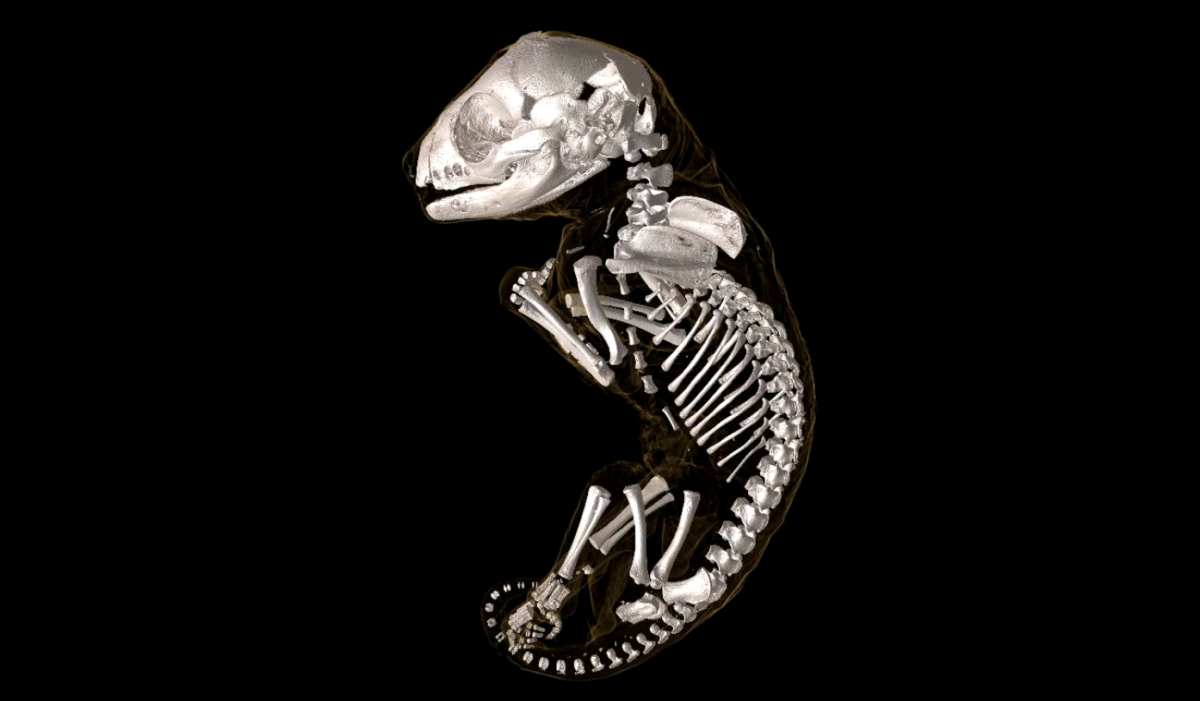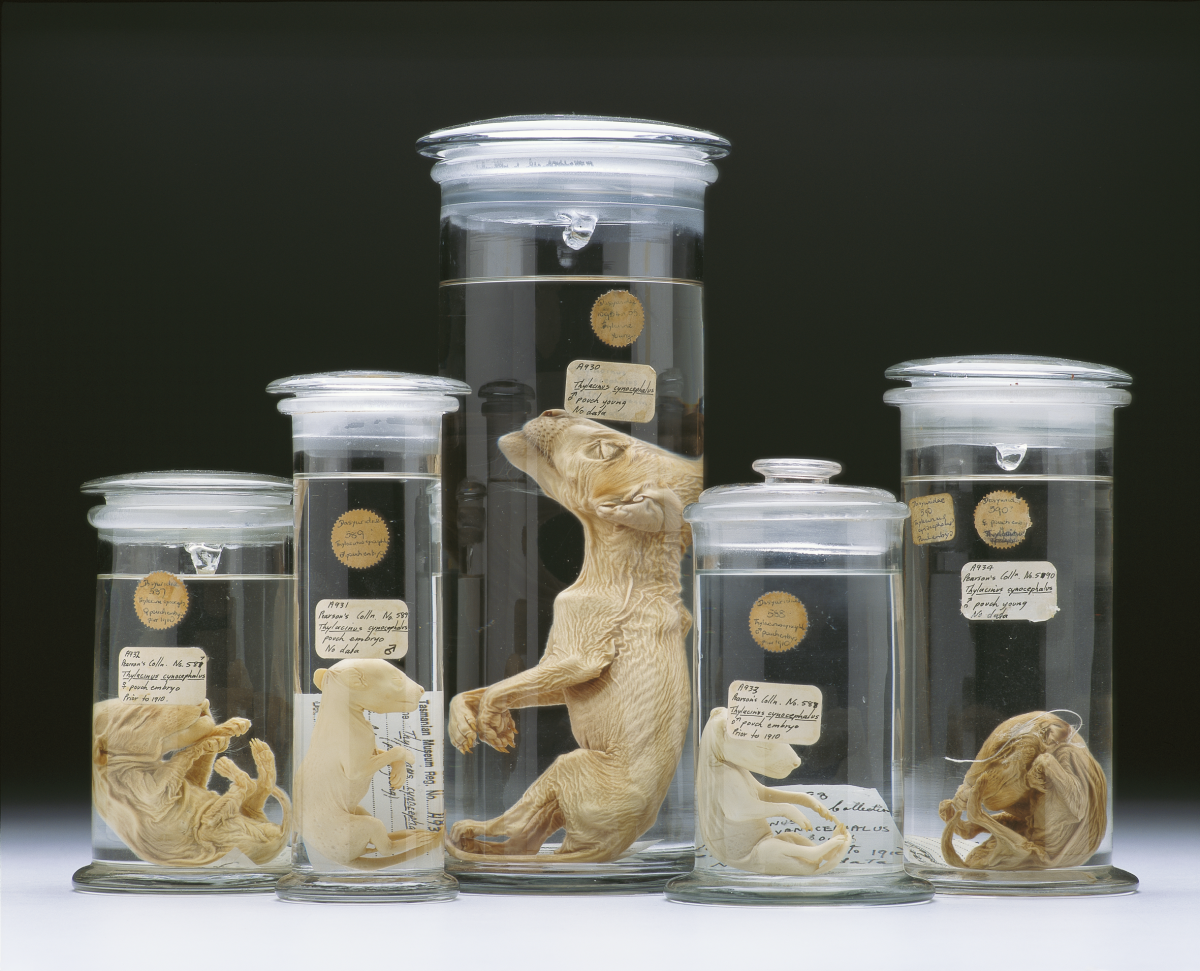On September 7, 1936, the death of a zoo animal named Benjamin marked the last time the world would ever see a living Tasmanian tiger, or thylacine. With Benjamin, we lost untold knowledge about this tan, striped, dog-like marsupial and how it grew and lived.
But not all was lost. Today, mounted taxidermy specimens and skeletons still exist in museums, which demonstrate the uncanny resemblance thylacines have to canines. But these extinct mammals are actually more related to kangaroos and wombats, and when they were alive they would hold baby "joeys" in their back-facing pouches. Luckily, museums have kept and maintained 11 specimens of thylacine joeys in jars for study.

Now, Australian and Czech scientists have made use of these joey specimens—they have CT scanned and documented their bodies, skeletons, and organs. The scientists published their results in the journal The Royal Society of Open Science, and you can see videos of the scans above.
CT, or Computerized Tomography, is ideal for studying "wet" specimens, or dead animals kept in jars of preservative liquid. With CT scanning, you can see inside an animal, and how its bones lie and how they grow and develop, without cutting into it. The scientists used the CT scans to make 3-D computerized models of the animal's bodies, skeletons, and organs, and used the different specimens as a sort of timeline of development.
They found that thylacines didn't really develop into their dog-like forms until relatively late in their pouch life. Before then, they kind of just looked like big-headed, toothless fetuses, very similar to a possum in a pouch.
They look so similar to other marsupials, in fact, that one might mistake another marsupial baby for a thylacine—which is exactly what happened. While collecting the specimens from the world's museums, the scientists initially believed that they had 13 thylacine joeys. But the first thing that they discovered upon reviewing the scans was that two of the specimens weren't even thylacines, but some other type of marsupial.

Despite the fact that the thylacine joeys had been "born" before they died—they had left the uterus—they look strangely similar to the developmental stages of fetuses, which is why it's so hard to tell them apart from other marsupials like Tasmanian devils at that stage. Marsupial animals still have a lot of developing to do in their mothers' pouches before they're ready for the outside world. Unfortunately for the baby thylacines, they never had the opportunity to grow up. Decades ago, Tasmanian settlers had killed mother thylacines and pulled some of the joeys from their pouches during a campaign to slaughter all the Tasmanian tigers.
When farmers in Tasmania grew concerned that thylacines were attacking their sheep, the government started offering bounties on their pelts. Between 1888 and 1909, Tasmanian officials paid people to kill more than 2,000 thylacines. It's generally believed that the eradication attempt was successful, although occasionally people claim to spot them in the wild.
Some scientists have even tried to clone the thylacine, bringing it back from its human-caused extinction. This research may prove useful in further resurrection attempts, or at least in understanding the legacy of the animals that we officially lost with Benjamin.
Uncommon Knowledge
Newsweek is committed to challenging conventional wisdom and finding connections in the search for common ground.
Newsweek is committed to challenging conventional wisdom and finding connections in the search for common ground.
About the writer
Kristin is a science journalist in New York who has lived in DC, Boston, LA, and the SF Bay Area. ... Read more
To read how Newsweek uses AI as a newsroom tool, Click here.








